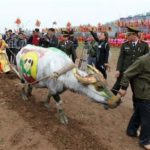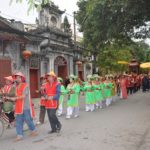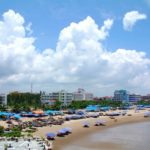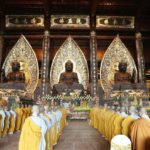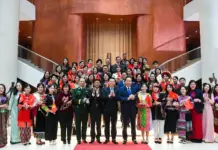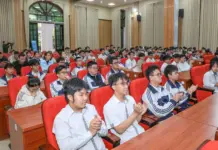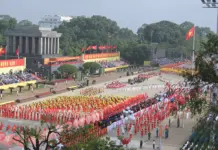The negotiations in Paris, which spanned almost five years, showcased Vietnam’s distinctive approach to people-to-people diplomacy.
The choice of Paris as the location for the Vietnam-US talks, rather than selecting two cities in Eastern Europe and Southeast Asia where Vietnam may have had political and geographical advantages, demonstrated Vietnam’s practical and realistic approach to diplomatic negotiations.
The Vietnamese Party Central Committee endorsed a strategy of simultaneous efforts on all three fronts – political, military, and diplomatic. It recognized that the primary focus should be on political and military action within South Vietnam, as this would set the stage for successful diplomatic achievements on the international stage.
President Ho Chi Minh and the Party made the strategic decision to host the talks in Paris, recognizing its significance as a global political and cultural hub located in the heart of Europe. This decision aimed to elevate people-to-people diplomacy to the forefront of the new revolutionary period, addressing the limitations of Vietnamese diplomacy at the time.
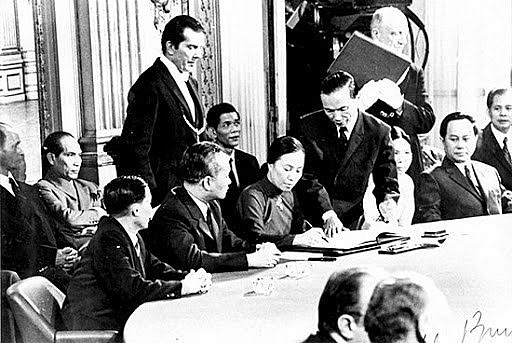 |
| Minister of Foreign Affairs Nguyen Thi Binh, chief negotiator of the Provisional Revolutionary Government of the Republic of South Vietnam, signs the Paris Peace Accords on January 27, 1973. |
From its headquarters in Paris, home to the world’s leading international news agencies, the latest updates on the war, particularly Vietnam’s diplomatic initiatives, were rapidly disseminated across the globe with utmost accuracy and vividness.
In Paris, representatives of the Vietnamese diplomatic sector, referred to as “Viet Cong,” were easily accessible to political circles, mass organizations, and peace-loving individuals from France and other countries, including the US. These representatives were able to engage with progressive, peace-seeking, and justice-loving mass organizations throughout Western European countries. By doing so, they were able to mobilize support from people and political circles within these countries in support of the Vietnamese people’s struggle. France, with the largest overseas Vietnamese communities in the world at that time, was an essential partner in realizing Vietnam’s diplomatic strategy, offering support in various aspects.
Vietnam actively participated in the negotiations in Paris, fully understanding that the outcome of the war would ultimately be determined by the military strength on the battlefield rather than the negotiations themselves. Nevertheless, amidst this unequal conflict, Vietnam relied not only on its own tenacity but also on the invaluable support of peace-loving individuals and organizations globally, particularly the American people and the allies of the United States. Throughout the nine-year resistance war, valuable lessons were learned in the importance of people’s fronts and anti-war movements, which were prominently showcased in the negotiations held in Paris.
The “fight and talk” strategy was implemented by Vietnam, effectively countering their opponent’s initial intention to calm anti-war movements through diplomatic negotiations. Vietnam compelled their opponent to engage in the battlefield and adhere to rules not determined by them. The prolonged diplomatic struggles surrounding the selection of conference participants and the shape of the negotiating table, ranging from rectangular to square and eventually round, served as notable lessons in diplomacy.
The Vietnamese diplomats gained the admiration of the public and established favorable connections with individuals from diverse social backgrounds in Western nations, including politicians, scholars, writers, journalists, and renowned artists. These connections significantly impacted public opinion on Vietnam.
During this period, people-to-people diplomacy aimed to engage individuals from various backgrounds, including workers, farmers, students, and even elites within Western society. These efforts were not limited to mass struggles, but rather sought to foster active participation and understanding among diverse groups.
The Provisional Revolutionary Government of the Republic of South Vietnam has been actively pursuing diplomatic objectives since its establishment and participation in the Paris Conference. Beginning in June 1969, the representative offices of the National Front for the Liberation of South Vietnam in socialist countries were upgraded to embassies. The Front’s delegation to the Paris Conference became part of the Provisional Revolutionary Government, under the leadership of Foreign Minister Nguyen Thi Binh. In addition to socialist countries, the Provisional Revolutionary Government has also established embassies in capitals of other countries such as Egypt and Algeria.
The concept of people-to-people diplomacy embraced the slogan, “The Provisional Revolutionary Government of the Republic of South Vietnam – the sole authentic representation of the South Vietnamese populace.” In a remarkable feat, shortly after its formation, the Provisional Revolutionary Government of the Republic of South Vietnam secured recognition from 23 nations, with 21 establishing formal diplomatic relations.
In light of the absence of an official embassy in Paris, the Provisional Revolutionary Government of the Republic of South Vietnam put forth a proposal to open an information office in the city, obtaining the necessary approval from the French Government. This initiative resulted in the recognition and establishment of diplomatic relations with the Provisional Revolutionary Government by up to 90 countries worldwide, spanning from June 1969 to early 1976.
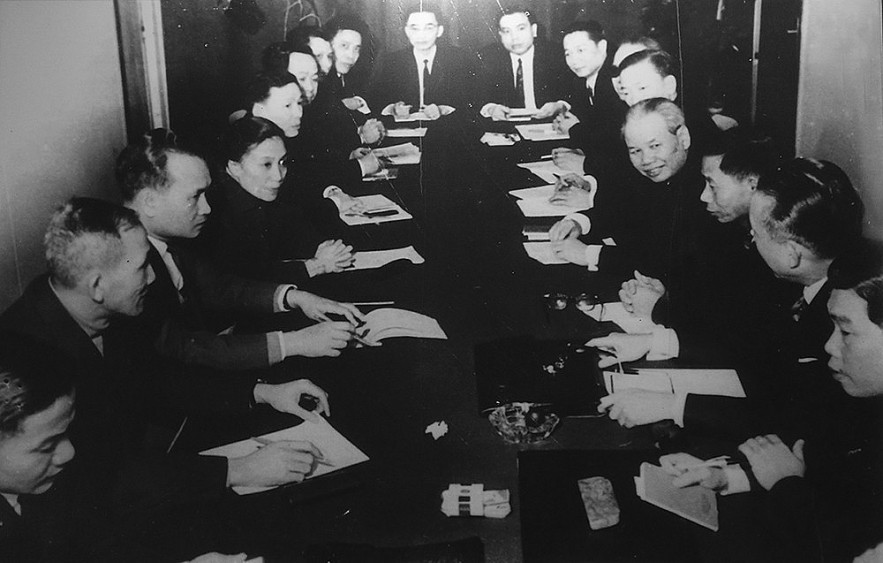 |
| The delegations of the Democratic Republic of Vietnam and the National Front for the Liberation of South Vietnam at the four-party Conference on Vietnam in Paris. Photo: Vietnam National Museum of History |
The Provisional Revolutionary Government of the Republic of South Vietnam actively engaged in mobilizing countries for recognition and conducted a diplomatic campaign at intergovernmental international organizations. They sought official membership and participated in multilateral diplomatic forums, competing with the Republic of Vietnam.
The struggle for rightful representation of the South Vietnamese people in the Non-Aligned Movement (NAM), an intergovernmental international organization of developing countries, proved to be a valuable lesson and a significant diplomatic victory. Despite challenges posed by the intervention of the US and the Republic of Vietnam, the Provisional Revolutionary Government of the Republic of South Vietnam successfully campaigned for observer status at the NAM Foreign Ministers’ Meeting in Georgetown, Guyana, in 1972. Building on this achievement, they later became an official member of the NAM at the 4th Summit in Alger, Algeria, in 1973, thanks to support from progressive nations.
The signing of the Paris Agreement and Vietnam’s membership in the NAM have established a robust foundation in international law and politics, providing a prime opportunity for Vietnam to pursue membership in other intergovernmental organizations. Building on recommendations from the UN Secretary-General during the International Conference on Vietnam, the Provisional Revolutionary Government of the Republic of South Vietnam has appealed to member states for their support in obtaining observer status at the UN.
Vietnam was engaged in a significant diplomatic effort to secure participation in the Diplomatic Conference on International Humanitarian Law in early 1975. This conference focused on approving two Protocols that would supplement the four Geneva Conventions for the Protection of War Victims. These Protocols aimed to enhance the protection of individuals affected by both international armed conflicts (Protocol I) and non-international armed conflicts (Protocol II). Despite garnering support from socialist and developing nations, the Provisional Revolutionary Government of the Republic of South Vietnam fell just two votes short of being formally invited to this crucial diplomatic gathering organized by the United Nations.
At the Paris Conference on Vietnam, commencing and navigating a diplomatic struggle proved to be a pivotal achievement. Nevertheless, the utmost significance lay in strategically concluding the diplomatic campaign and leveraging the triumphant diplomatic victory.
After the signing of the Paris Agreement on Ending the War and Restoring Peace, an international conference on Vietnam took place. During this conference, representatives from several countries including the US, France, Hungary, Indonesia, Poland, the UK, the Soviet Union, Canada, and China were present. The three sides of Vietnam also participated, alongside the UN Secretary General. As part of the conference, an act was signed to commemorate the occasion.
This event marked a significant achievement in people-to-people diplomacy, exemplifying the success of the Provisional Revolutionary Government of the Republic of South Vietnam. The government secured the equal opportunity to sign a crucial international legal document, alongside countries representing diverse political regimes across the globe, including the five permanent members of the UN Security Council.
The aim of the act is to acknowledge the signed agreements, bring an end to the war, uphold peace in Vietnam, safeguard the fundamental national rights of the Vietnamese people, and protect the self-determination of the South Vietnamese people. Additionally, it plays a crucial role in fostering peace in the broader Indochina region.
Tam Chuc Pagoda – Ancient beauty amidst majestic scenery
Covering 5,100 ha, Tam Chuc complex is a perfect combination of ancient beauty and the mighty of the immense mountain.

